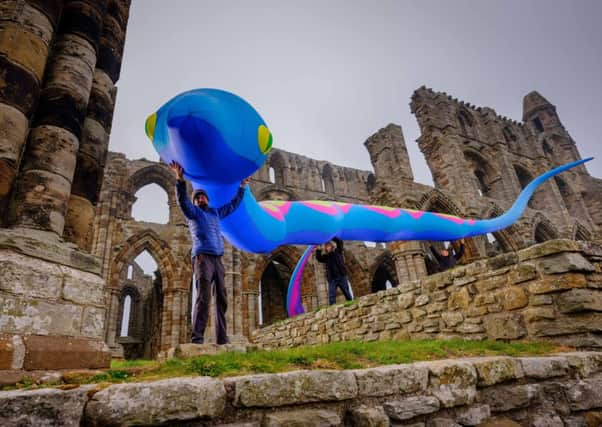Hiss-tory comes alive as giant snakes at Whitby Abbey pay tribute to legend of St Hilda


To celebrate the re-opening and as part of English Heritage’s Telling Tales season, the charity has re-imagined a famous legend associated with Whitby, the abbey and its founder, St Hild.
A temporary installation of giant inflatable snakes will evoke how Hild dealt with a plague of snakes in the abbey by driving them over the cliff.
Advertisement
Hide AdAdvertisement
Hide AdThe snakes smashed their heads in the fall and were miraculously turned into stone.
Visitors to Whitby today can see the remains of these ‘petrified’ snakes on the town’s beaches – in reality, ammonite fossils.
Andrea Selley, English Heritage’s Director for the North, said: “Whitby Abbey was one of the most important religious centres in the world and the decisions made there continue to shape our lives today.
“We’ve now done justice to the abbey’s remarkable stories, from its role in deciding the future of the Church in England to how its ruins inspired great artists and authors.
Advertisement
Hide AdAdvertisement
Hide Ad“A visit to Whitby just wouldn’t be complete without exploring the abbey and the changes we’ve made there – including a new entrance, the revamped museum, and the new café – will ensure that visitors get a warm welcome at this Yorkshire icon.”
In 664, the abbey it was the setting for the Synod of Whitby, a landmark in the history of the Church in England.
It was here that the rivalry between the two strands of Christianity in England, the Hiberno-Scottish and the Roman, came to a head.
The two traditions differed over such issues as how priests and monks should wear their hair and, most significantly, how the date of Easter should be calculated.
Advertisement
Hide AdAdvertisement
Hide AdEnglish Heritage’s new museum tells the story of Whitby Abbey, from the Bronze Age to today, and features a rare and internationally significant collection.
It explores the history of settlement on the exposed Whitby headland, the spiritual significance of the site and how generations of writers have found inspiration in the dramatic landscape and wind-swept ruins.
Key artefacts include imposing Anglo-Saxon free-standing crosses, intricately worked metal-work that speak of the international connections of St Hild’s monastery, finely carved stonework from the later Benedictine Abbey, and a signed edition of Bram Stoker’s Dracula, arguably the most famous horror novel in the English language.
Whitby Abbey is now officially open to the public following a soft opening since last Monday, and the temporary snake installation will be in place until the end of this weekend.